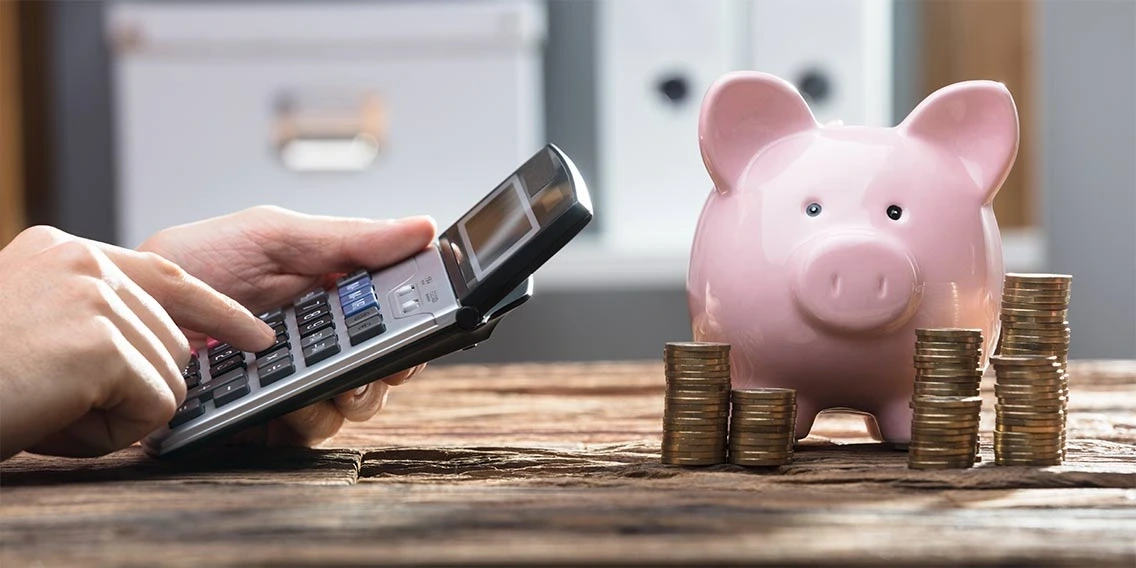CHECKING & SAVINGS
How Much Can You Save in a Savings Account?
EXPECTED READ TIME: 5 MINUTES
You know you should save. You hear it all the time. But have you ever wondered how much you can save in a savings account? Is it ever possible to save too much? There’s no limit to how much money you can save in a savings account. But there is a limit to how much you should. It all depends on your financial goals.
How Much Does the Average Person Keep in Savings?
The average savings account balance for an American is $3,500.
However, only around 71% of Americans have savings accounts, and some studies suggest even those Americans with savings accounts aren’t saving enough.
Of those Americans who save, 53% have a designated emergency fund. While that’s an improvement from 44% in 2019 and 49% in 2020, around 75% of Americans still say they would have to borrow money to cover an emergency expense of $1,000 or more.
How Much Money Should I Keep in My Savings Account?
You save for different reasons. Sometimes you’re preparing for the next time the car breaks down, and other times you’re putting away for a vacation. There’s no right number for how much money you should have in savings. But you can calculate the right number for you if you know what you’re saving for.
How Much Should I Save in an Emergency Fund?
An emergency fund is money saved in case of large, unforeseen expenses like job loss, medical expenses, or major home repairs. Emergency funds help you cover these costs quickly without going into debt.
Experts advise people to save enough to cover between three and six months’ worth of living expenses, although some are now suggesting it could be wise to save up to a year’s worth of expenses.
Since everyone’s expenses differ, you’ll have to crunch some numbers to find the right savings goal for you. Just add up all your essential monthly expenses and multiply by the number of months you want to have covered. (You can leave out nonessentials like eating out or entertaining — just focus on food, housing, utilities, and insurance premiums.)
Let’s say your monthly living expenses are $3,500. The table below shows that you would need to save between $10,000 and $42,000 to have a healthy emergency fund. (If that number makes you panic, don’t — we have tips to help you save money fast.)
How Much to Save in an Emergency Fund*
*based on essential monthly expenses of $3,500
| Number of Months of Savings | Amount Saved |
|---|---|
| 3 months | $10,500 |
| 6 months | $21,000 |
| 9 months | $31,500 |
| 12 months | $42,000 |
Non-Emergency Savings
It’s smart to have a dedicated emergency fund that you only use in true financial emergencies.
But you might save for other reasons, too. You can save for family vacations, small home improvements, or fun purchases to avoid relying on credit cards or loans that come with interest charges.
If you prefer to save for these kinds of expenses, then you might want to keep your fun savings account separate from your emergency account — so you’re not tempted to dip into it for non-emergencies.
How Much Is Too Much in Savings?
This might be surprising, but it is possible to save too much. When your money goes into savings, it’s not going other places that might give you a better financial future. Here are four signs you might be saving too much:
1. Inflation Has Outpaced Your Savings?
One problem with stashing everything in savings is that even high-yield savings accounts don’t keep up with inflation. That means the money you put into savings loses buying power over time.
For instance, say you have $10,000 in a savings account that earns a 1% return, but inflation is 2%. In five years’ time, that $10,000 won’t be able to buy as much as it can today, whereas investing your money in accounts with higher yields could help you keep up with or beat inflation.
2. You’re Missing Wealth-Building Opportunities
Savings accounts offer important protection against financial emergencies, but they aren’t the best way to build wealth.
Yields on savings accounts are low compared to money market accounts and certificates. Even if you find a high-yield savings account, annual percentage yields on savings accounts are variable so your rate could drop over time.
Check out the table below to compare the relative yields (based on national average rates as of 2022 for illustrative purposes — these are not necessarily current PenFed rates).
| Savings Product | Annual Percentage Yield |
|---|---|
| Savings Account | 0.06% |
| Money Market Account | 0.08% |
| 3-Month Certificate | 0.06% |
| 1-Year Certificate | 0.17% |
| 5-Year Certificate | 0.32% |
Having too much in savings and not enough in other, more profitable accounts could mean you’re missing out on chances to build wealth. The chart below shows how much money you could earn with different savings options. Assume you’re investing $1,000 for one year in each product.
| Savings Product | Amount Earned |
|---|---|
| Savings Account | $1,000.06 |
| Money Market Account | $1,100.00 |
| 1-Year Certificate | $1,001.70 |
| 1-Year Certificate | 0.17% |
| 5-Year Certificate | 0.32% |
While the difference between a savings account and 1-year certificate isn’t that big, consider the difference over five years:
- A savings account balance would be $1,003.00
- A 5-year certificate balance would be $1,016.10
3. You’re Not Maxing Your Retirement Accounts
It’s tempting to try to save for old age, but inflation and low annual percentage yields make savings accounts a poor retirement option. Once your emergency fund is in place, a better long-term option is dumping excess cash into a 401(k). If you’re already maxing your what your employer will match, consider putting extra money into a supplemental retirement account.
4. Your Savings Exceed $250,000
The Federal Deposit Insurance Corporation (FDIC) and National Credit Union Administration (NCUA) are federally-backed insurance programs that protect people’s money against bank failures. If your bank goes out of business, you’ll still be able to receive the money in your accounts.
The FDIC and NCUA require that banks and credit unions insure savings accounts up to $250,000. You may have to take additional measures if you want to protect larger savings accounts.
The Takeaway
Saving money is a key part of financial wellness. Like Goldilocks’ porridge, it can be tough to pin down just the right amount to save — knowing your purpose for savings and your options for investing is a great first step.
Invest in Your Future
Discover the diverse offering of products, services, and support available to our members.




